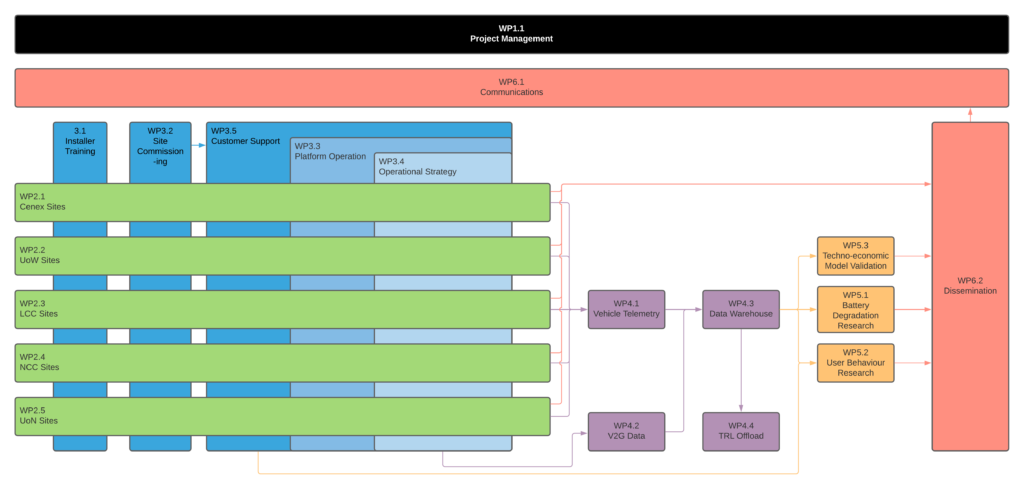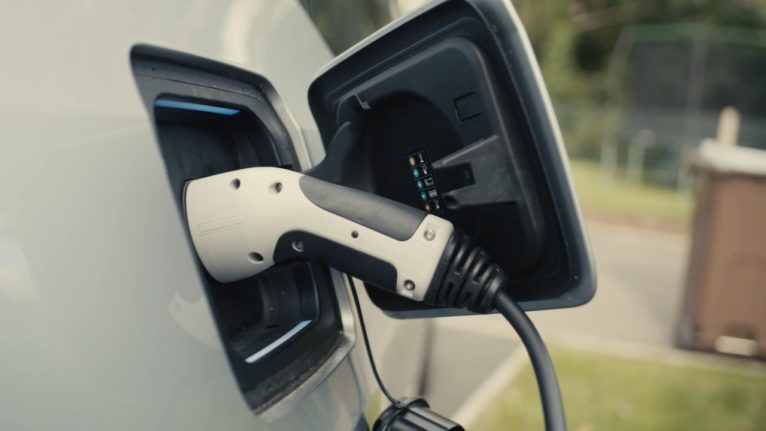Disarray and difficulty:
It’s no understatement that 2020 has been a difficult year. The arrival of the novel coronavirus covid-19 has turned our society upside down (or is that outside-in?) with lockdowns and the pandemic response, not to mention the tragedy of deaths, illness and isolation for many families and friends.
Personal impacts aside, predictably it has also thrown business plans into disarray. Strategies previously locked have had to be re-opened in the light of changing economic and market fundamentals. Operations managers have burned the candle at both ends to keep the show on the road.
Demonstrator disrupted:
Innovation projects were not immune to the disruption.
In early 2020, the EV-elocity project was battling challenges on a number of fronts – finding suitable and eligible demonstration sites, installing the technology and ensuring a robust customer experience were difficult. These were good challenges – if innovation is straight-forward, then it’s unlikely to be innovative enough! And feedback from other vehicle-to-grid (V2G) demonstration projects suggests they were not unique to us. But they were challenges nonetheless.
When the pandemic hit and attention for our demonstrator sites was rightly redirected, the project faltered, especially as a number of the original partners had left the project.
Re-defined delivery:
Therefore, we took the opportunity to reform the project, refocus our objectives and work with Innovate UK and our funders to find an improved route forwards.
We are excited that our project has now re-launched in a new and focused format.
We are ramping-up quickly to pick up the pace of delivery and make up for lost ground. And we’re excited to start communication project updates publicly again – for instance, we’ll be at Cenex’s annual Low Carbon Vehicle event (this year online on 18th and 19th November) so come to our virtual stand to find out more and meet us.
Details developed:
For now, we want to share the new project headlines. The EV-elocity project aims to:
Demonstrate vehicle-to-grid in a range of real-world situations to gain technical, customer and commercial insights into this emerging technology
To achieve this, we have agreed 5 main aims to be tackled between now and February 2021:
- Deploy a technology-agnostic backend system and user interface to manage and operate V2G units
- Demonstrate V2G across a range of UK locations, collecting data on charger, user and vehicle behaviour
- Discover more about the user behaviour and operation of V2G
- Deepen understanding around the impacts of V2G on battery degradation
- Develop an evidence-based techno-economic model of the viability and value of V2G within the UK
The diagram, below, outlines our new project structure and how the partner’s activities will work together to achieve these aims.

Cenex has a long history of involvement with V2G (see our recent publication A Fresh Look at V2G for a good overview) and so we’re really excited to have the opportunity lead this project with our partners CrowdCharge, Leeds City Council, Nottingham City Council, University of Nottingham and University of Warwick.
Keep an eye on this space for their introductions and news as we start to get our first installations into the ground.
Blog by Chris Rimmer, Infrastructure Strategy lead at Cenex, the UK’s centre of excellence for low carbon and fuel cell technologies. Chris is responsible for the overall project management for the EV-elocity project, ably assisted by the partners and their representatives.
The Project EV-elocity is part of the Vehicle-to-Grid (V2G) competition, funded by the Department for Business Energy and Industrial Strategy (BEIS) and the Office for Low Emission Vehicles (OLEV), in partnership with Innovate UK, part of UK Research and Innovation.
In January 2018, OLEV and BEIS announced that 21 projects (8 feasibility studies, 5 collaborative research and development projects, and 8 real-world v2g trial projects) were to receive funding of £30m to develop the business proposition and the core technology to support Vehicle 2 Grid deployment in the UK, including its demonstration with large scale trials.
The projects involve more than 50 industrial partners and research organisations from both the Energy and Automotive sector, marking the largest and most diverse activities on V2G in the world, and trialling more than 1,000 vehicles and V2G charger units across UK.
The V2G projects represent a significant step towards the transition to a low carbon transportation and a smart energy system. Allowing EVs to return energy to the Power Grid when parked and plugged for charging, will increase Grid resilience, allow for better exploitation of renewable sources and lower the cost of ownership for EV owners, leading to new business opportunities and clear advantages for EV users and energy consumers.


